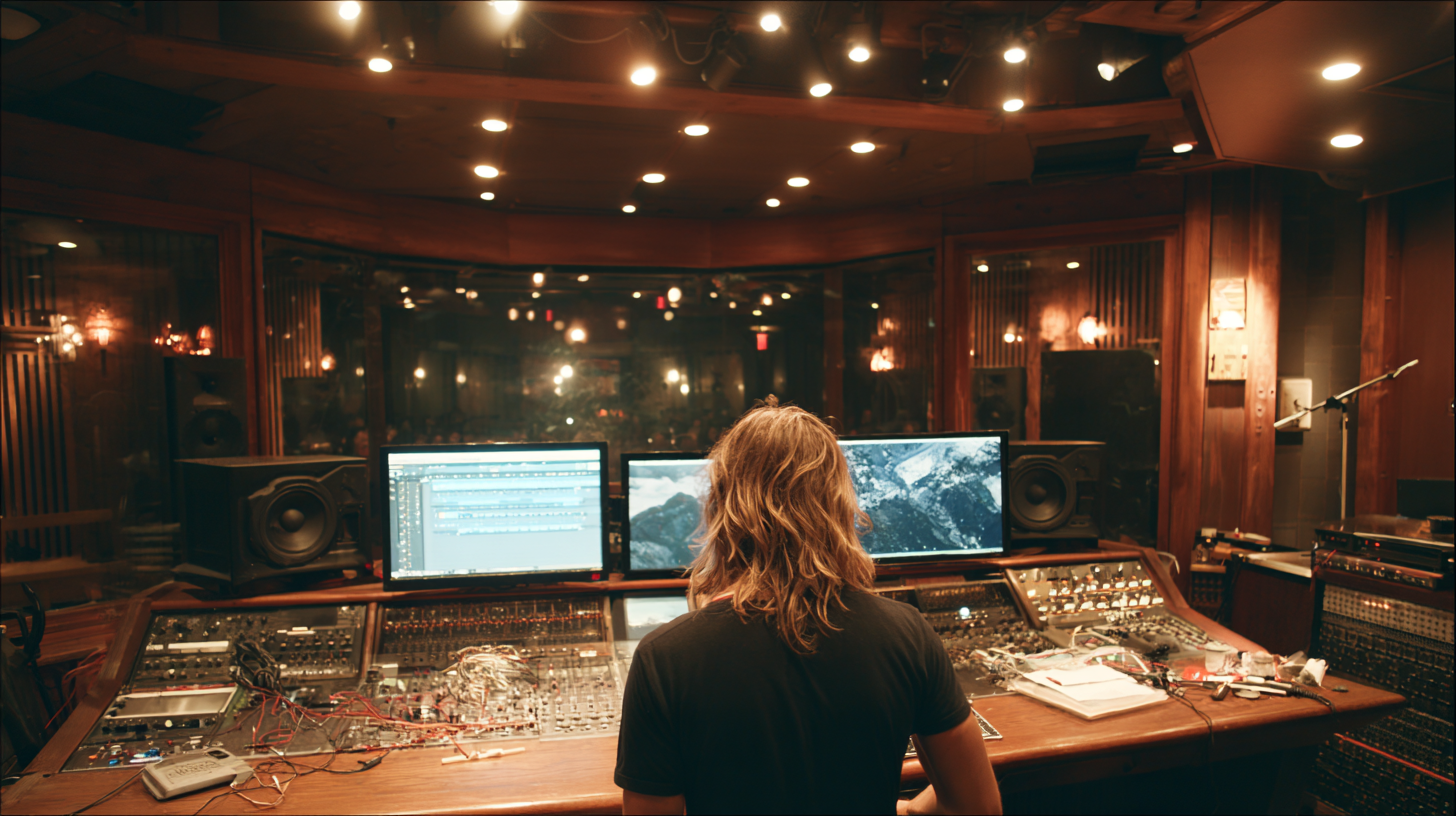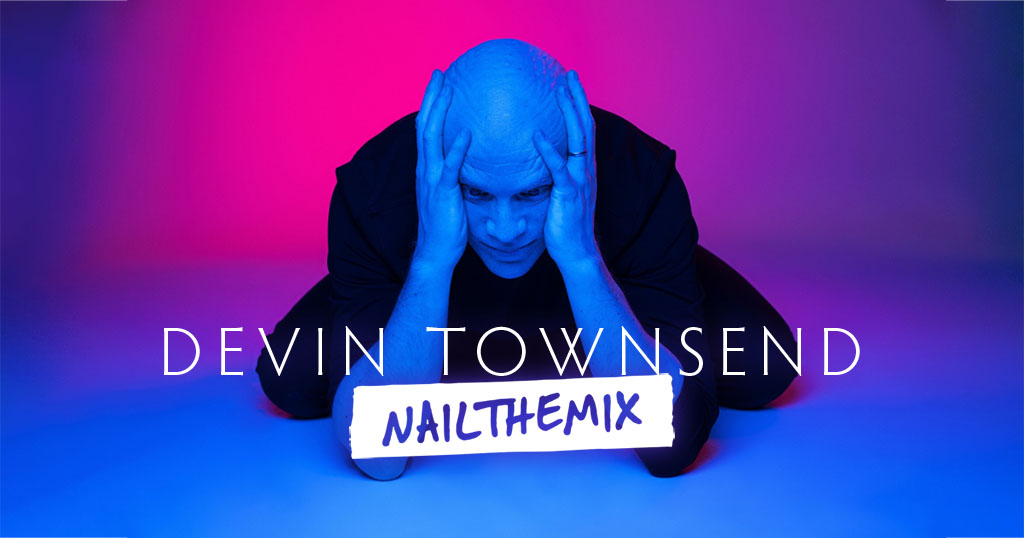
Mixing Saosin’s Verse Vocals: Using Delay To Lock Into The Mix
Nail The Mix Staff
Ever get a vocal track dialed in with the perfect amount of grit and presence, only to find it sounds… disconnected? It’s a common problem. You’ve nailed the compression and carved out the perfect space with EQ, but the vocal still feels like it’s floating on top of the mix instead of sitting inside it.
This is where delay comes in. It’s not just for creating huge, washed-out effects; it’s one of the most powerful tools for adding subtle ambiance and gluing your vocals to the instrumental track. We’re going to break down some pro-level delay techniques, using the verse vocals from Saosin’s “The Silver String” (mixed by the incredible Beau Burchell) to show you how it’s done.
These are the kinds of techniques used every day by the pros you can learn from at Nail The Mix. Let’s dive in.
Starting Point: The Dry Vocal Problem
First, let’s hear the vocal with just some basic processing. It sounds good, it’s compressed, and it’s sitting at a decent level. But it’s dry and feels a little separate from the wall of guitars and drums. It needs a sense of space to make it feel like it belongs in the same room as the band.
Tactic 1: Mono Delays for Core Ambiance
One of the first places to start, especially for a verse, is with a simple mono delay. A mono delay keeps the effect right up the center with the lead vocal, adding depth and ambiance without cluttering up the stereo field. This is a killer strategy for keeping verses tight and focused, saving the big, wide effects for the chorus to create more impact.
Finding the Right Timing
The timing of your delay drastically changes the feel. Let’s look at a few common subdivisions:
- 16th Note Delay: This is a very fast, tight delay. At a quick tempo, it can sound almost like a reverb, creating a short, rhythmic ambiance that thickens the vocal without a noticeable “echo.”
- 8th Note Delay: This is your classic, rhythmic echo. It’s more noticeable than a 16th note and can add a nice sense of movement that syncs with the groove of the track.
- Quarter Note Delay: A slower, more spacious delay. This creates obvious echoes that can fill the gaps between vocal phrases, giving the track a bigger, more atmospheric feel.
For this Saosin track, the quarter note delay provided the best sense of space without feeling distracting. But the key is to experiment—what works for one song might not work for another.
Don’t Forget to Filter Your Delay
Here’s a crucial pro tip: always filter your delays. A raw delay signal can have a lot of high-frequency content that makes it sound harsh or clash with the main vocal’s clarity. By using the filter on your delay plugin (or a separate EQ), you can shape the tone of the echoes. A good starting point is to roll off the top end above 4kHz or 5kHz. This tucks the delay behind the main vocal, making it feel more like a natural ambiance and less like a bright, distracting effect.
Tactic 2: Going Wide with Stereo Delays
When you want to add width, a stereo delay is your best friend. This can make a vocal feel bigger and more epic. We used the familiar Waves H-Delay to explore this.
Standard Stereo vs. Ping-Pong
There are a couple of ways to go wide. A standard stereo delay will create echoes in both the left and right speakers simultaneously. A ping-pong delay, however, will have the echoes bounce from one side to the other.
A ping-pong delay sounds massive and anthemic. It’s an awesome effect, but that much left-right movement can sometimes be distracting in a busy verse. A great mixing strategy is to use a focused mono or standard stereo delay in the verse and then switch to a wide ping-pong for the chorus to create more impact. This makes the chorus feel like it explodes in width, creating a powerful dynamic shift in your song.
Many delay plugins, like the H-Delay, also have cool features for tone-shaping. The “Lo-Fi” button on the H-Delay, for example, is a fantastic one-click way to roll off the harsh highs and muddy lows, instantly making the delay sit better in the mix.
Tactic 3: The “Widener” Trick with Slap-Back Delay
Here’s a more subtle and advanced technique: using a super-fast stereo delay to create width instead of a distinct echo. This is often called a “slap-back” delay, and it can give your vocal a cool, almost “bathroom-y” vibe that makes it sound bigger.
To do this, set up a stereo delay with a very fast timing, like a 32nd note or even a 64th note. The magic of this effect comes from aggressive filtering.
Aggressive Filtering is Key
You don’t want the full frequency range in this slap-back effect. The goal is to isolate the midrange to add texture and width without adding mud or fizz. Use your delay’s built-in filters or an EQ plugin to heavily filter the signal. Try a high-pass filter up to around 300-500Hz and a low-pass filter down to around 3kHz.
The result is an extremely subtle effect. In isolation, it might sound a bit weird, but in the mix, it just makes the vocal pop out a little more and feel wider and more exciting.
The Pro Move: Stacking Multiple Delays
This is where it all comes together. Instead of relying on one single delay to do all the work, pros will often “stack” or “cascade” multiple delays, with each one doing a small, specific job.
By combining the techniques above, you can build a complex, professional-sounding vocal space. Try this:
- The Widener: Start with the 32nd-note stereo slap-back, filtered to the midrange, to create width.
- The Texture: Add a tight 16th-note mono delay to add a bit of rhythmic thickness.
- The Space: Blend in a quarter-note delay (mono or stereo) to create the main sense of ambiance and space.
The key is to keep the mix level of each delay very low. You shouldn’t be able to distinctly hear each individual echo. Instead, you’re blending them to create one cohesive, polished effect. When you A/B this—toggling all the delays on and off—you’ll hear the magic. With them off, the vocal feels disconnected again. With them on, it locks perfectly into the mix, feeling finished and professional.
Want to see exactly how Beau Burchell used these principles to mix the entirety of “The Silver String”? You can watch him break down his entire session, track by track, inside Nail The Mix’s session with Saosin.
Saosin on Nail The Mix
Beau Burchell mixes The Silver String
Get the Session
Learning to use effects like delay is what separates a good mix from a great one. If you’re ready to unlock your sound and move beyond presets, experimenting with these kinds of layered vocal effects is a perfect place to start. Try it on your next mix and hear how your vocals suddenly feel more polished, powerful, and perfectly glued to the track. For an even deeper dive, check out the full Saosin mixing session now.
Get a new set of multi-tracks every month from a world-class artist, a livestream with the producer who mixed it, 100+ tutorials, our exclusive plugins and more
Get Started for $1






